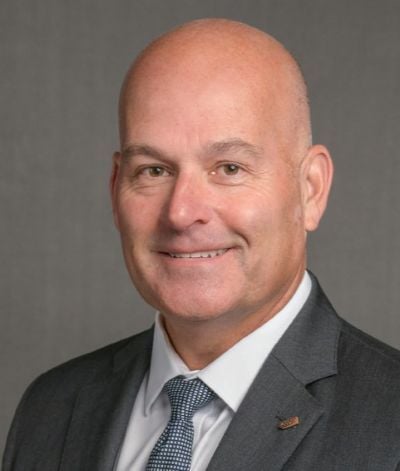Weathering the Storm
FM & the skilled labor shortage

A recent Associated Builders and Contractors of America (ABC) model warns that the construction industry, including FM service providers, will need to attract 650,000 workers in addition to normal hiring to meet the demand for labor in 2022. And across industries, a Manpower Group survey found that 69 percent of employers are experiencing difficulties filling roles, a 15-year high.
Global working hours in 2022 will be almost 2 percent below their pre-pandemic levels, according to the ILO World Employment and Social Outlook – Trends 2022. That is equivalent to the loss of 52 million full-time jobs. It is estimated that around 40 million people will no longer be participating in the global labor force.
This shortage will be more acutely felt in positions key to FM and operations that require trade skills such as HVAC mechanic, electrician and plumber. In the last two years, the time to locate talent has increased from an average of 30 to more than 45 days. Firms seeking candidates for roles outside their core business experience even more challenges.
The lack of skilled labor is clearly indicated in the employment data. While overall employment is below the post-World War II average, the labor force participation rate is at its lowest level ever (62.3 percent in February 2022).
In short, the number of open positions going unfilled is not because of the shortage of potential workers but because of the lack of the right workers. Compounding the issue is that the average age of a skilled trades professional is 45 years old. With the bulk of skilled trades workers nearing retirement age, the need to backfill these roles is paramount.
3 reasons for the skills gap
What caused the skills gap? The reasons are many, but three reasons stand out:
1. Education system
Today’s education system promotes college degrees over technical skills. A higher percentage of high school graduates attend college than ever before. Students are encouraged to major in degrees that have limited demand or a less than desirable return on investment.
A University of Washington study found that 53 percent of recent college graduates were underemployed, holding jobs that did not require a bachelor’s degree. Compounding the problem is eliminating some technical programs from community college offerings.
Collin College of Plano, Texas, USA, had not offered technical programs for many years, and only in 2021 reintroduced technical trade offerings. This misdirection of education focus is reflected in a survey by Inside Higher Ed that found 96 percent of college academic advisers believed their students were prepared for the workforce, when only 11 percent of business leaders in a Lumina survey agreed with that statement. For-profit technical colleges that had previously filled the gap until government restrictions limited offerings have gained momentum during COVID-19 lockdowns and are beginning to reintroduce programs. The lack of supply and demand for technical training will play the primary role in technical shortages in the future.
2. Employer expectations
Today’s employers expect qualified candidates to be available when and where needed. In previous generations, workers were hired in apprentice roles, then trained by their employer to best fit the required job. Early corporate training programs were designed to bring an employee in at a young age and, through training and advancement, retain that employee throughout their working life.
Automation, outsourcing and pressure on profits ended most internal training programs. Today’s corporations expect new FM hires to step right in and perform their role with little to no training. This mindset creates even more difficulties for the trades building owners need. HVAC mechanics, electricians and plumbers do not have the luxury of learning on the job.
3. Automation
More facilities use advanced automation for equipment. Most of this automation is sold with the promise of efficiency and productivity for the facility owner. Many times, what is not considered is that these advanced building systems require highly trained technicians to operate and maintain them, a concept opposite the sales pitch.
The result is underused technology or unused technology. This perceived benefit to the facility owner results in fewer and less-skilled hires who are incapable of operating and maintaining the technology in the facility. TDIndustries found that in over 75 percent of the cases, facilities are underusing the technology provided to them. In these cases, the facility owner assumed the technology would make up for the misapplied skill of the facilities team.
In most instances, the facility owner is unwilling to invest additional money to train the FM team, resulting in an inefficient building and discouraged FMs unable to operate their buildings properly. The ultimate effect of this strategy is the lack of emphasis on training for FM teams and a gap between the employed skills and those required to operate the facility properly.
How facility owners can survive the storm
Given these current and future challenges, how can facility owners improve results?
Mentorship
Develop an internal mentorship program for the team. Assign more experienced professionals to mentor younger or less-experienced team members. Pair individuals with compatible personalities and similar interests; if a young technician is interested in HVAC, pair them with an HVAC specialist.
Encourage employees to gain knowledge and upskill by paying for certifications and rewarding new skills with promotion opportunities. Many experienced technicians volunteer their own time in the evenings to teach apprentices through college programs.
Partnerships
Partner with high schools or community colleges offering technical programs to develop a pipeline of skilled labor to fill open positions.
Alternative labor resources
Adults with Intellectual and Developmental Disabilities (IDD) – According to the Centers for Disease Control (CDC), there are approximately 6.5 million in the U.S. with intellectual and development disabilities (IDD). Traditionally this population has been underrepresented in the workforce with a 19 percent unemployment rate as of 2019. Recent trends have seen an increase in employment driven by available resources to adults with IDD.
Project SEARCH is a program developed at the Cincinnati Children’s Hospital Medical Center in 1996 to train adults with IDD to work in high turnover, entry-level roles that involve complex and systematic tasks such as stocking supply cabinets.
Since its inception, Project SEARCH has grown from a single program site at Cincinnati Children’s to a large and continuously expanding international network of sites. Project SEARCH’s primary objective is to secure competitive employment for people with disabilities.
The Canadian coffee chain Tim Horton’s began hiring adults with IDD over 20 years ago. With the support of an Ontario-based employee development program, its employees with IDD have outperformed other employees in retention and customer and employee satisfaction.
Formerly incarcerated persons – According to a Pew Research study, about 2.1 million people are incarcerated in the U.S. About half are nonviolent offenders, according to the Prison Policy Initiative. An increasing number of programs prepare prisoners for their return to society, such as the Prison Entrepreneurship Program (PEP), which matches prisoners with mentors who help prisoners develop business skills that can be used to start their own business or better find and integrate into a role once released.
A Baylor University study found that PEP participants reoffended at 5 percent compared to the nonparticipant rate of 23 percent and provided a 340 percent societal financial benefit for every dollar invested in the program.
Outsourcing
Facility Service Providers (FSPs), whose sole focus is the FM field, typically develop internal training programs used to support the career growth of skilled workers.
Being regularly in the market for talent provides FSPs with an edge in recruiting skilled labor versus a firm that only recruits occasionally. In addition, an FSP can provide skilled workers with a career path and continuing training that may not be available from a firm not in the skilled trades industry.
The time to act is now. Preparing for the continuing challenges of the trade skills gap can keep organizations on solid ground to weather the current and coming storms.

Brian Lillard has 30 years of real estate and facilities experience in various industries including corporate, health care and education. Before becoming vice president and business unit manager of facilities, he served as chief operating officer at Camelot Facility Management Services in Plano, Texas, USA, from 2009-18. There, he oversaw significant growth and added accounts including Liberty Mutual and Pizza Hut, among others. Lillard also previously worked for Trammell Crow Company and Panattoni Development and founded his own real estate software company.
References
abc.org/Portals/1/CEU/Construction-Spending-2022.png?ver=2022-02-22-102511-743
go.manpowergroup.com/talent-shortage
ilo.org/global/about-the-ilo/newsroom/news/WCMS_834117/lang--en/index.htm
washington.edu/doit/what-can-students-do-improve-their-chances-finding-employment-after-college
pewresearch.org/fact-tank/2021/08/16/americas-incarceration-rate-lowest-since-1995/
Read more on Leadership & Strategy or related topics Workforce Development
Explore All FMJ Topics









